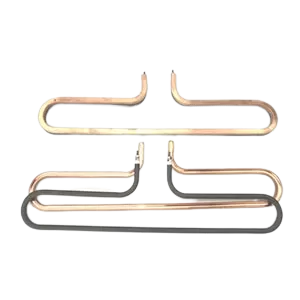Tubular heaters are a perfect fit when it comes to industrial heating and for a good reason! They are versatile, quite efficient, and relatively durable. However, things like these look easier said than done especially with the number of tubular heaters available in the market. This guide aims to help in this regard by discussing the basic aspects to focus on, productive advice, and particularly tubular heater functions and features so that an informed selection can be made.
Table of Contents
Why Tubular Heaters? The Typical Heroes of Industrial Heating World
- Recognition of Various Forms of Tubular Heaters
- The Material: Choose the Correct Sheath
- Watts and Volts: Estimating Your Heating Requirements
- Dimensions and Customization: A Practical Solution to a Designing Challenge
- Safety and Certification
- Conclusion
Why Tubular Heaters? The Typical Heroes of Industrial Heating World
Being able to fit into the needs of each industry, tubular heaters find their place in food preparation, pharmaceuticals, automotive, packaging, and other industries. The increasing number of industries adopting tubular heaters has caused industrial heaters employing this configuration to reach 25%. Great for cases of drying, melting, and even heat maintenance, they can emit reaching and sustaining temperatures to 750 degrees F (400 degrees C). Their curvature enables redesigning so tubular heaters can meet individual needs becoming a unique corrective for specific applications.
1. Recognition of Various Forms of Tubular Heaters
Selecting a tubular heater involves at least one step, and that involves knowledge of various forms of tubular heaters that are available:
- Finned Tubular Heaters: The use of finned tubular heaters are recommended in situations where there is a need to heat gas or air or other applications where heat transfer efficiency is of concern.
- Flanged Tubular Heaters: Depending on the construction, flanged tubular heaters can be used for heating fluids because leakage is prevented by their sealed construction.
- Over-the-Side Heaters: These are for situations when heating needs to take place from the top, and are best used where it is impractical to use bottom heaters such as in tanks.
All the above give a different benefit profile and knowing each allows the user to apply the correct one for the task at hand thus cutting cost and time.
2. The Material: Choose the Correct Sheath
The sheath material of a tubular heater is critical in determining the place where it can be used. Below are some of the sheath materials together with their common applications:
- Stainless Steel: This is fit for any food processing functions since it is not prone to oxidation and corrosion which makes it an ideal fit for applications where moisture is present.
- Incoloy: An alloy known for its resistance to corrosion and heat, Incoloy sheaths find common usage in industrial environments and chemical applications.
- Copper: Good for low-temperature water units; they are not only effective but also cost-efficient.
In case the application involves the use of corrosive chemicals, then stainless steel or Incoloy sheaths will be ideal.
3. Watts and Volts: Estimating Your Heating Requirements
It should be noted that there exists a need to choose the right watt density as defined by the output heat per square inch, hurting the material and applications that are sensitive such as plastics or oils. But there are many applications such as in automotive that would require high temperatures which means higher watt densities are beneficial.
Low watt density (10-15 W/in²) — useful for small parts and where delicate applications like viscous oil heating are involved. Med. Watt Density (15-40 W/in²) — for most industrial uses. Harsh industrial applications where a balance between heat intensity and heat efficiency performance is required. High watt density (40+ W/in²) — it is possible to achieve rapid heating.
4. Dimensions and Customization: A Practical Solution to a Designing Challenge
The tubular heater that should be most suited for what you are seeking should be one that will not only meet the specifications but should also be adaptable to different shapes.
Almost any configuration for a heater, be it U-shape, hairpin bent, or even multi-bent could be used, which is the beauty of tubular heaters; with this they are able to achieve adequate coverage and even heat distribution.
When installing a heater, it is wise to take the area in which the heater will be placed into account in order to avoid inconsistencies. Most manufacturers have been able to try and come up with solutions that are not one-size-fits-all, so use the opportunity to find a heater that fits your needs.
You Should also read this Blog: Explore the Top 10 Game-Changing Benefits of Ceramic Band Heaters
5. Safety and Certification
With the use of powerful heating equipment, safety should always come first. To guarantee the safety of tubular heaters, choose those bearing marks from recognized entities such as UL or CE. Such certification informs that this heater has been tested and is performing effectively and reliably and is safe.
With regard to the common concern of heater performance, it has been posited that certified models have around 30 percent avoidable failures under extreme conditions. Choosing certified heaters leads to safer and longer-lasting solutions, which keeps the possibilities of malfunction and downtime at a bare minimum.
Conclusion
Factors to consider when selecting a tubular heater include the application, the required wattage, and the materials that will be effective in the working environment. With appropriate tubular heaters installed, one can expect effective energy use, longer equipment life, and dependable operation.
An educated decision is a decision that can be endured for many years. Always be sure to take a few minutes to look at your alternatives, and speak with professionals if need be—this tiny step may prove to be very valuable in enhancing your industrial heating solutions.



